As my readers know, the co-protagonist in my werewolf novel Apex Predator is an irredeemably wicked hot woman by the name of Tanya. What follows are some of the influences that went into creating what is one of my favorite characters.
At the top of the list would have to be the character Marsha Quist/Marcia Lura – from the book and movie “The Howling” (played in the movie by Elisabeth Brooks as pictured here). Though I generally prefer the movie over the book (minus the outstanding prologue to the book), if I had to pick between the two I lean toward the book’s original rendition of Marsha.
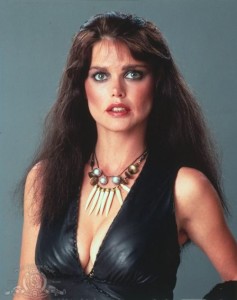
This is by no means meant to be a slight against Elisabeth Brooks. She did a wonderful job as Marsha, both visually and emotionally capturing much of what a reader would have conjured up in their brain as they read author Gary Brandner’s work. However, in terms of being an influence on my own Tanya the book’s Marsha was more sophisticated (though nowhere near as formidable as Tanya). The movie Marsha tended more toward the feral and barely under control. Though my Tanya is not one you would want to provoke, she is more multi-dimensional with greater depth to her character.
Nevertheless, multiple influences were behind the concepts that became my Tanya. For instance, the character Sarah Conner (played by Linda Hamilton) from the now iconic Terminator and Terminator II movies is another of those big influences.
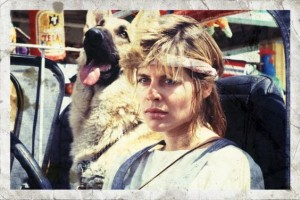
I loved the way the original Terminator showed Sarah Connor’s evolution from vulnerable victim, to resourceful survivor, to victor. Then sometime between the first and second film, and as happens to most heroic champions, she had her downfall. Ironically this happened in spite of her doing what she believed she must – in becoming a survivalist and warrior – to protect her son and humanity. Yet this self-sacrifice had a huge downside for her and her child. In the second film he had become a teenage malcontent hardly worthy of being humanity’s future savior. Meanwhile Sarah Connor had become radicalized to such an extent that she spent much of the same film acting as a sociopathic terrorist who came across as a paranoid schizophrenic at best – before vindicating herself and rising once more to heroic status.
Similarly, Tanya’s tragic background – forged in the cauldron of war – helps my readers understand how a once innocent peasant girl became a destructive killing machine ranking as perhaps the most cunning and violent of Apex Predator’s major characters. Throughout the book Tanya wrestles against her violent nature. She does the right thing in some instances and in others gives in to the monster within – producing horrific results for the unfortunate targets of her predatory instincts. This leaves the reader wondering whether she will be able to truly become a hero, or revert to the bestial nature that has allowed her to do more than just survive in a harsh and unforgiving world – but to thrive as well. Though my Tanya is different than Sarah Connor, I owe a debt of gratitude to those writers, directors, and actors that gave The Terminator such a complex, interesting, and inspirational woman as its central star.
Now, let’s talk about the ladies of Alien/Aliens; beginning with Ellen Ripley. The character played to brilliant effect by Sigourney Weaver – beginning in 1979 with the now classic “Alien” and continuing for nearly two decades thereafter. Though I could go on and on about Ripley and how much of a strong role model she is for women the world over – I would much rather hone in on something else about the character and the work she appeared in: the 1986 sequel to Alien.

James Cameron’s “Aliens” is unquestionably a different movie than Ridley Scott’s “Alien”. Most people remember the sequel for its military style action sequences involving Ripley and Colonial Marines facing off against hordes of xenomorphs. However, in addition to Ripley’s stirring role in besting the xenomorphs, there was something else that made Aliens such a great squel. That being another of the film’s great characters and of them all, who can forget Vasquez. The presence of Vasquez (played by Jennette Goldstein) alongside Ripley makes Aliens not just a great sequel, but perhaps the ground breaking female dominated action/military/science fiction/horror movie of all time.

I dare anyone to find such a popular box office smash as Aliens that features a better pair of ass-kicking ladies. They influenced my Tanya in so many ways. Yet, Tanya is a unique personality. However, she in many ways combines the best and worst of each of them; the toughness, intelligence, resourcefulness, sheer will to survive, and strength alongside the stubbornness, disdain for authority, self-destructive, and at times violent impulses that get her into trouble. All of which leaves my readers wondering which tendencies will Tanya give in to next – the good or the bad?
Speaking of bad I would be remiss if I didn’t mention another horror movie icon who influenced my Tanya. The one and only Sybil Danning.
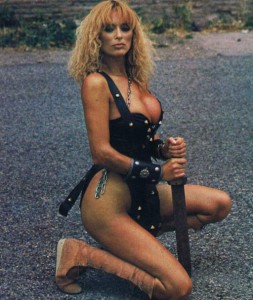
That’s right, Stirba the werewolf queen from Howling II; Eva and Gretchen Krupp (The She-Devils of Belzac) from Grindhouse’s Werewolf Women of the SS; vampiress Frau von Hess; and co-star to Lou Ferrigno in Hercules (she’s seen here back in 1983 with her sword) – as well as so many accolades I can’t even begin to list them all.
Like Dee Wallace (who follows me on twitter) she is a true scream queen and star. Plus, she is hot! I would kill to have a body like hers, and I’m a quarter century younger. She was always hot and is still hot (see the recent picture of her at age 60). This leads me to wonder – maybe she’s not just acting in all those movies. Maybe she really is a werewolf, or perhaps a vampire?

Either way, she’s an inspiration. I likely couldn’t have crafted my voluptuous, strong, athletic, and bad-ass Tanya (albeit Tanya is a brunette) without such strong female influences as Sybil. If you haven’t seen any of her films, then by all means pull up the Netflix, grab some popcorn, and get watching! Or, pick up a copy of Apex Predator and see if you can spot the influence of these fantastic characters and actresses on my Tanya.
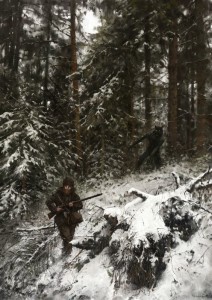
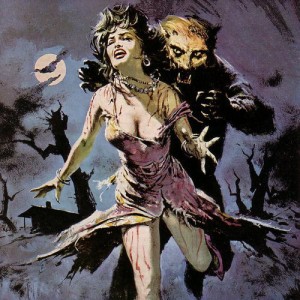






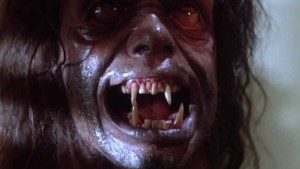
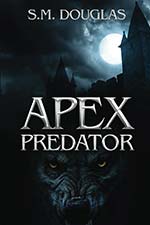
Recent Comments